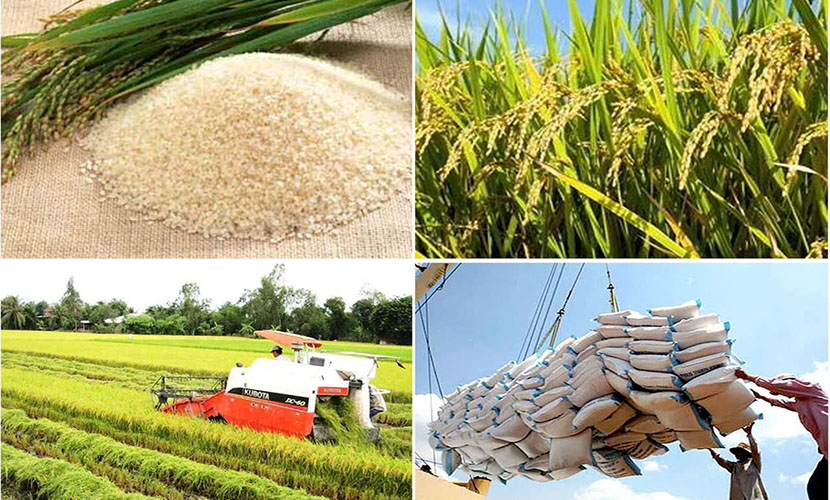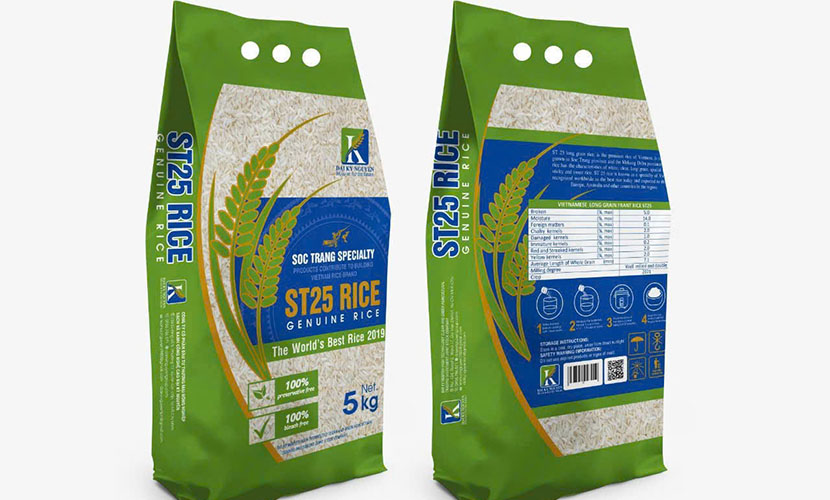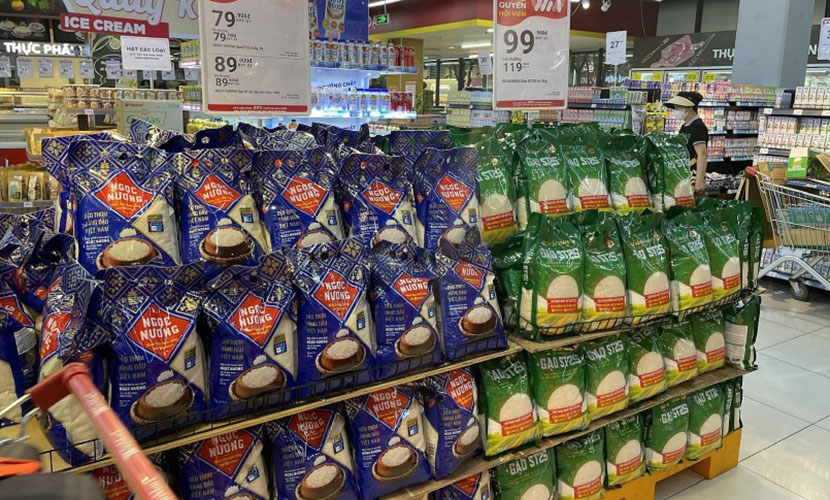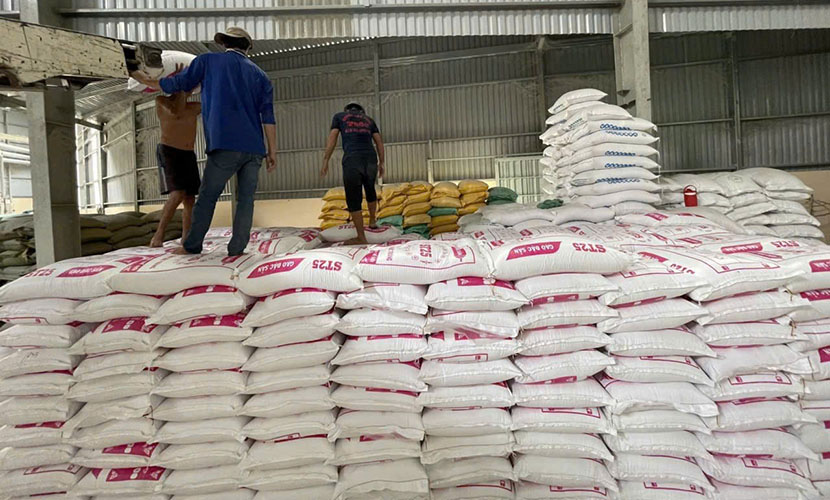
Vietnamese rice is not only a strategic agricultural product. It also needs to be positioned as a product that carries cultural value and social responsibility. Investment in branding, processing, and traceability is the key to expanding market share in high-end consumer markets.
Vietnam currently ranks among the top three largest rice suppliers in the world. However, most of the export volume still relies on price competitiveness rather than establishing a brand presence in premium markets. Vietnamese rice is present in traditional markets such as the Philippines, China, and Malaysia. This presence mainly comes from essential demand and reasonable prices.
When entering high-quality markets like the European Union, competition no longer revolves around price. This is especially true in countries with sophisticated consumer tastes, such as Austria. Instead, it shifts to the story of identity and brand value.

Vietnamese rice
Since the Vietnam-EU Free Trade Agreement came into effect, the EU has opened many opportunities for Vietnamese agricultural products. These opportunities include tariff preferences for products such as rice. Low import tariffs give Vietnamese rice a price advantage over Thailand, India, or Cambodia.
This short-term advantage offers potential benefits for export businesses of Vietnam’s rice. However, it will quickly disappear if they fail to adapt to the strict technical standards imposed by the EU market.
Austria is a small population market with high purchasing power and strict standards. Vietnamese rice has a fragrant aroma and sticky texture. It is winning over consumers thanks to its reasonable price and food safety factors.
According to Ms. Yen, Head of the Vietnamese Trade Office in Austria: “More and more consumers in Austria are choosing Vietnamese rice in their daily meals. The diversity of types, delicious aroma, reasonable price, and especially food safety factors have won over many customer groups. These groups range from local families to upscale restaurants and hotels in Austria.”

ST25 rice from Vietnam
Vietnamese businesses must meet strict requirements to maintain and expand market share. These requirements include traceability, organic certification, environmentally friendly production processes, and social responsibility commitments.
One of the biggest current barriers is the fragmented production model. This leads to a lack of supply chain linkage and inconsistent product quality. Moreover, Vietnamese rice still lacks a clear brand identity in the international market. Meanwhile, Thai and Indian rice have systematic branding strategies linked to regional characteristics. They heavily invest in packaging, labeling, and communication activities.
Austrian consumers appreciate features such as long, white, fragrant, and sticky grains, which are strengths of Vietnamese rice. However, most do not recognize these rices as originating from Vietnam. The lack of national identity recognition for the product is a core weakness in building the brand position of Vietnamese rice in the international market.
To shift from a raw material export model to value-added exports, Vietnamese businesses need to establish a long-term strategy. This strategy should start with restructuring the supply chain and ensuring quality according to the standards of the target market.

Vietnamese rice on supermarkets
First, it is neccessary to change production mindset, not merely “producing to sell,” but “producing according to market demand.” Businesses need to proactively research consumer preferences in European countries. The trend favors organic products that are free from pesticide residues. These products are also environmentally friendly and authentically certified.
Ms. Yen recommends: “Businesses need to invest heavily in processing technology, market research, brand building, and product promotion. Most importantly, they need to listen to the market feedbacks. They will help them adjust products to suit the tastes and consumption trends of Austrian consumers.
Investing in post-harvest processing technology is an inevitable step to maintain rice quality from storage to the European dining table. Simultaneously, product packaging needs to be professionally designed. It should convey stories about the origin, cultivation process, and cultural values unique to Vietnamese rice.
These factors strengthen consumer’s trust. They also serve as important competitive tools as consumers increasingly value the intangible aspects of products.
Another effective approach is to build a national brand for the rice sector. This could be similar to the “Vietnamese Rice” model, positioned as “the pure pearl grain from Asia.” A national brand does not replace corporate brands. Instead, it serves as a guarantee, enhancing the prestige and overall value of exported products.

Harvesting Vietnam’s rice
Additionally, deep cooperation with organic supermarket chains and upscale restaurants in the EU will help Vietnamese rice enter sustainable distribution channels. This will reduce dependence on middlemen or informal exports.
Especially with European consumer trends increasingly emphasizing social responsibility and environmental protection, businesses need transparency in product information. They should integrate QR codes for traceability and obtain international certifications such as Globalgap, Organic to maintain their position in this market.
The role of trade promotion by government agencies and the Vietnamese Trade Office in the EU is also extremely important. Instead of spreading efforts thin, focus on promoting target markets such as Germany, the Netherlands, and Austria. These markets have consumers with high incomes who are particularly concerned about food safety and the environment.
The connection between regulatory agencies and the business community will be the catalyst to boost the Vietnam’s rice brand far and wide. This connection will not only expand market share but also shape a new position on the global agricultural product map.

Vietnamese rice warehouse
EVFTA provides export advantages, but it is not a “golden ticket” guaranteeing success if Vietnamese businesses remain stuck in the “low price” strategy. In the context of global markets demanding higher standards of quality, greening, and cultural identity, Vietnamese rice can only go far if it is elevated by a well-planned strategy.
This strategy should cover everything from quality to branding, and from domestic to international markets. Then, “Vietnamese rice” will truly become a national pride on global dining tables.
The EU market requires strict technical standards and high-value chain compliance. Many other markets, like Algeria or Malaysia, tend to have different approaches. Mr. Nhuan, Vietnamese Trade Counselor in Algeria, said bilateral trade turnover is growing strongly. There is special interest in agricultural products, food, chemicals, and production linkage opportunities.
However, as Mr. Cuong, Counselor in Malaysia, warns, although the Malaysian market shares cultural similarities, competition is fierce. Also, there are signs of increasing protectionist measures. This shows that although each market has its own demands, all aim for high-quality, traceable products with brand value. This is a long-term strategic priority that the Vietnamese rice sector must focus on.
Vietnamese source: https://thuonghieusanpham.vn/gao-viet-vuon-xa-nho-chat-luong-va-ban-sac-80886.html
